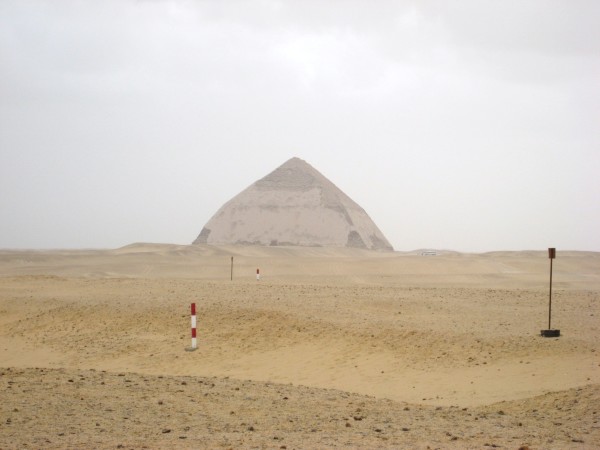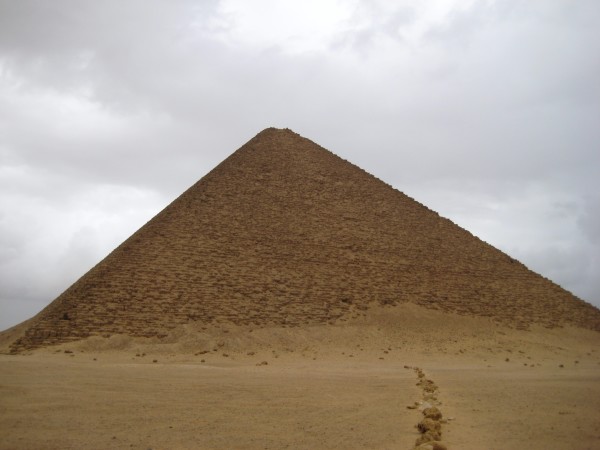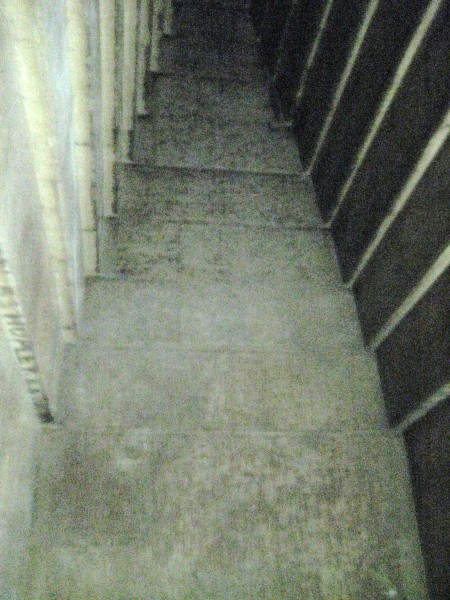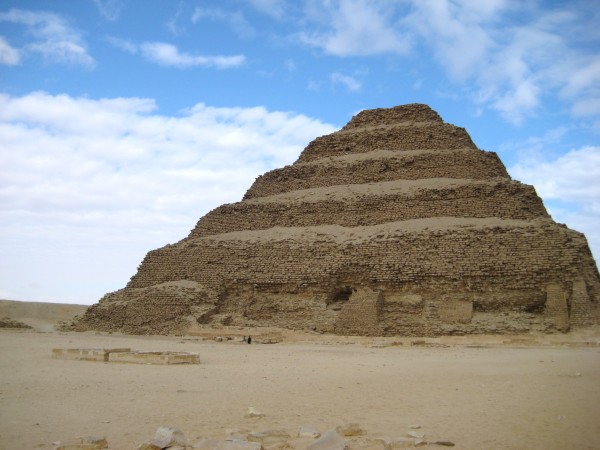
After a dreary, cloudy, drizzle-filled first day in Cairo, I was not thrilled to wake up my third morning to the sound of pouring rain and crazy wind outside. I had heard Cairo typically only got four or five days of rain each year and somehow I had already been there for two of them. I was also scheduled to visit the early pyramids in Cairo, those at Dahshour and Sakkara, which are the pre-cursors to the pyramids at Giza. The whole day seemed to be in jeopardy.
Luckily, by the time my guide, Amira, picked me up from the hotel at 8:00 a.m., the rain had slowed to a drizzle and by the time we reached Dahshour (about a 45 minute drive), the rain had stopped altogether. However, it was still quite windy and chilly and I was feeling pretty thankful that I brought my ski jacket with me, even though I never imagined I would actually need it. Dahshour is the home of the Red Pyramid and the Bent Pyramid, both built by King Snofru. The Bent Pyramid is called that because it was started at too steep of an angle, so then they had to change the angle and bend the rest in.

It isn’t possible to go inside the Bent Pyramid, but the Red Pyramid is open to visitors. When we arrived, no one else was in sight, so I was eagerly anticipating the chance to climb inside the pyramid all by myself. But much to my dismay, as Amira explained the history of the pyramid to me in the car, a busload of Japanese tourists arrived, so I ended up being far from alone when I finally went inside.
The entrance to the pyramid was actually pretty high up off the ground, so I had to climb up a set of stairs first. When I reached the top, I was staring down a long passageway not even high enough for most adults to stand upright. I had to bend over at the waist to make my way down, which was far from comfortable. After going down for several minutes, I arrived in a large chamber, at which point I went up again, into another chamber. I ended up in the next chamber by myself, so I took the opportunity to snap a photo (no flash!), even though they are not allowed.

After Dahshour, we moved on to Sakkara, the home of the Step Pyramid and several smaller pyramids and other tombs. Of the tombs we saw here, the tomb of Mere-ruka impressed me the most. It was incredibly well-preserved and full of amazing colors and large statues. Unfortunately for me, Amira (unlike my guide Adel the day before) liked to follow the rules and would not let me take any photos.

Our next stop was a carpet school, which is one of the typical stops that tour guides make in Cairo, hoping that you will buy something and earn a commission for them. I knew this, but agreed to it anyway because I was really curious about it – they have kids starting at age 12 making these wool and silk carpets by hand. And in the end, I did succumb to the pressure and buy something – a small wool wall-hanging with the hieroglyphic alphabet.
After a stop at Memphis, which is more of a museum now and not too impressive, we ended up at a restaurant called Felfela for lunch. As I did with Colin earlier, I just let Amira order and got to try some good stuff – falafel (which I had never tried before!), bread with aubergine, tahini and feta cheese dips, a pasta/rice/lentil bean dish called something that starts with a “k” and then, for the main course, beef kabob and kofti – some sort of minced meat/sausage type thing. By the time we left, I was sufficiently stuffed and completely enamored with falafel. It was time to return to the hotel for a much-needed nap.
Note: I visited Egypt in January 2008, prior to the revolution. This post was originally published in 2010.
